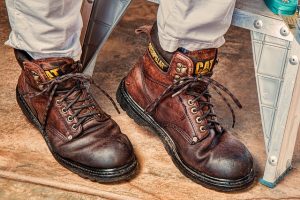 So you have some people coming to visit the site, and they have zero experience on construction jobs. How do you make sure that they stay safe while touring the facilities? Here are some tips:
So you have some people coming to visit the site, and they have zero experience on construction jobs. How do you make sure that they stay safe while touring the facilities? Here are some tips:
HARD HATS AND GOGGLES
Make sure anyone visiting the site is fitted with hard hats and goggles and that they understand the importance of proper safety gear. These can make the difference between a funny story and a lawsuit that puts your client out of commission.
WHAT TO COVER IN A SAFETY BRIEFING
Different points will vary from site to site, but there are a few basic points that are pretty universal:
-Stay with your guide.
-Don’t touch anything unless it’s a handrail.
-Don’t lean on anything.
-Here’s where we keep the first aid kits.
-Keep long hair, loose clothes and shoelaces tied and tucked.
-The bathroom/portable toilet is right over there.
As long as you’re escorting normal people and not the Three Stooges around a job site, then these points should be enough to cover most work stations.
OFF-LIMITS AREAS
You really don’t want anyone who isn’t working on the job to be around live, exposed wires, walking through confined spaces, or climbing ladders and navigating scaffoldings. Let your visitors know where they shouldn’t be, and plan your tour of the site around these areas, not through them. If they absolutely need to check out one of these areas, there’s always a safe alternative. You can send them photos, or let them look at it from a safe distance.
KEEP IT BRIEF
Construction sites are a high-risk environment. People who work in construction know the risks and have spent their entire career learning to better navigate the dangers of a job site. Your visitors have not. You don’t want to rush people along, but keep the tour going at a brisk pace, have them ask questions after the walk-through, and don’t keep your visitors in the danger-zone any longer than absolutely necessary.
Some construction professionals would rather just not have any visitors at all, under any circumstance, and ideally, that would always be an option. But, sometimes a client wants to see what their new living room is going to look like, or the architect needs to give some notes. It would be safest to have nobody on the job who isn’t working there, but when that’s not an option, make sure your visitors know the basic safety procedures.





